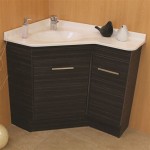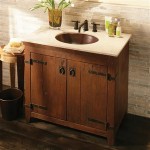How Much Is a Small Bathroom Remodel?
Determining the cost of a small bathroom remodel is a multifaceted process dependent on a variety of factors. No single price tag applies universally, as project scope, material choices, labor rates, and geographical location all significantly impact the final figure. Understanding these variables is crucial for accurately budgeting and managing expectations throughout the remodeling process.
While a basic remodel might focus on purely cosmetic upgrades like a fresh coat of paint and a new faucet, a more extensive project could involve replacing the toilet, bathtub, and vanity, along with re-tiling the floor and shower. These distinctions directly lead to varying price points. This article will delve into the key elements that contribute to the overall cost of a small bathroom remodel, providing a comprehensive overview to assist homeowners in planning their projects effectively.
Factors Influencing the Cost of a Small Bathroom Remodel
Several key elements contribute to the overall cost of a small bathroom remodel. A thorough understanding of these factors enables homeowners to make informed decisions and manage their budget effectively throughout the project.
1. Scope of the Remodel: The extent of the remodel is the most significant driver of cost. Minor cosmetic updates, such as painting walls and replacing fixtures with similar models, will naturally be more affordable than a complete gut renovation. A full remodel typically involves removing existing fixtures, altering the layout, replacing plumbing and electrical systems, and installing new flooring, tiling, and appliances. The more extensive the work, the higher the cost.
2. Materials and Fixtures: The choice of materials and fixtures plays a crucial role in determining the overall expense. High-end materials like natural stone countertops, custom cabinetry, and designer faucets will significantly increase the budget compared to more budget-friendly alternatives like laminate countertops, stock cabinets, and standard fixtures. Similarly, the type of flooring, such as ceramic tile, porcelain tile, or luxury vinyl plank, will impact the cost. The quality and style of the toilet, bathtub, shower, and vanity also need to be considered.
3. Labor Costs: Labor costs represent a substantial portion of the overall remodeling budget. These costs encompass the services of various professionals, including plumbers, electricians, carpenters, tile installers, and general contractors. Labor rates vary significantly depending on the geographical location, the contractor's experience and expertise, and the complexity of the project. Obtaining multiple quotes from different contractors is essential to ensure competitive pricing and to assess the contractor's qualifications and reputation.
4. Plumbing and Electrical Work: Modifying the existing plumbing and electrical systems can add considerable expense to the remodel. Relocating plumbing lines or electrical outlets requires specialized skills and can involve opening up walls and floors, leading to additional repair work. Upgrading the electrical panel to accommodate new fixtures and appliances may also be necessary. Addressing any existing plumbing or electrical issues, such as leaky pipes or outdated wiring, should be factored into the budget.
5. Permits and Inspections: Most bathroom remodeling projects require permits from the local municipality. The cost of these permits varies depending on the location and the scope of the work. Inspections are also necessary to ensure that the remodel complies with building codes and regulations. Failing to obtain the necessary permits can result in fines and delays, so it is crucial to factor these costs into the budget and to ensure that the contractor is familiar with the local permitting process.
6. Demolition and Disposal: The cost of demolition and disposal of existing materials should also be considered. Removing old fixtures, flooring, and walls can generate a significant amount of debris that needs to be properly disposed of. Some contractors include demolition and disposal in their overall quote, while others charge separately. It is important to clarify this aspect of the contract to avoid any unexpected costs.
7. Unexpected Issues: It is always wise to allocate a contingency fund to cover unforeseen issues that may arise during the remodel. These issues could include hidden water damage, asbestos abatement, or unexpected structural problems. A contingency fund of 10-15% of the total budget can help to mitigate the impact of these unexpected expenses and prevent the project from going over budget.
Typical Cost Ranges for Small Bathroom Remodels
While the exact cost of a small bathroom remodel can vary considerably, it is possible to establish general cost ranges based on the scope and complexity of the project.
Low-End Remodel (Cosmetic Upgrades): This type of remodel typically involves minor cosmetic updates, such as painting the walls, replacing the faucet and showerhead, and installing a new toilet seat. The existing fixtures are retained, and no significant changes are made to the layout or plumbing. A low-end remodel can range from $3,000 to $7,000.
Mid-Range Remodel (Moderate Renovations): A mid-range remodel involves more extensive renovations, such as replacing the vanity, toilet, and bathtub or shower. The flooring and tiling may also be replaced. The plumbing and electrical systems are typically not altered unless necessary. A mid-range remodel can range from $7,000 to $15,000.
High-End Remodel (Complete Overhaul): A high-end remodel involves a complete overhaul of the bathroom, including gutting the existing space and starting from scratch. This type of remodel often includes relocating plumbing and electrical systems, installing custom cabinetry, using high-end materials, and incorporating luxury features. A high-end remodel can range from $15,000 to $30,000 or more.
These are just estimates, and the actual cost of a small bathroom remodel can vary depending on the specific circumstances of the project. It is always best to obtain multiple quotes from different contractors and to carefully review the details of each quote before making a decision.
Strategies for Reducing Bathroom Remodeling Costs
Remodeling a bathroom can be a significant investment, but there are several strategies homeowners can employ to reduce costs without compromising the quality of the finished product.
1. Retain the Existing Layout: Moving plumbing lines and electrical outlets is one of the most expensive aspects of a bathroom remodel. By retaining the existing layout, homeowners can avoid these costs and significantly reduce the overall budget. Keeping the toilet, sink, and shower in their original locations minimizes the amount of plumbing and electrical work required.
2. Choose Budget-Friendly Materials: High-end materials can significantly increase the cost of a bathroom remodel. Opting for budget-friendly alternatives, such as laminate countertops, stock cabinets, and standard fixtures, can help to reduce expenses. Exploring options like ceramic tile instead of natural stone, or luxury vinyl plank instead of porcelain tile, can offer considerable savings without sacrificing aesthetics or durability.
3. DIY Some of the Work: Homeowners with some DIY skills can save money by tackling certain aspects of the remodel themselves. Tasks such as painting, demolition, and installing simple fixtures can be done without professional assistance. However, it is essential to be realistic about one's skills and to avoid attempting tasks that require specialized knowledge or expertise, such as plumbing and electrical work.
4. Shop Around for the Best Prices: Obtaining multiple quotes from different contractors and suppliers is crucial for ensuring competitive pricing. Comparing prices for materials, fixtures, and labor can help to identify the best deals and to negotiate lower rates. Online retailers and discount warehouses can also offer significant savings on bathroom remodeling supplies.
5. Consider Refacing Instead of Replacing: Refacing the vanity and bathtub can be a more affordable alternative to replacing them altogether. Refacing involves applying a new veneer or finish to the existing surfaces, giving them a fresh new look without the expense of buying new fixtures. This can be a particularly cost-effective option for vanities and bathtubs that are structurally sound but aesthetically outdated.
6. Plan Ahead and Avoid Changes: Making changes to the design or materials after the remodel has started can lead to costly delays and increased expenses. Careful planning and thorough research are essential for avoiding these changes. Creating a detailed budget and sticking to it as closely as possible can help to keep the project on track and within budget.
7. Look for Sales and Discounts: Many retailers offer sales and discounts on bathroom remodeling materials and fixtures throughout the year. Taking advantage of these promotions can help to reduce costs. It is also worth checking for rebates and incentives offered by manufacturers and utility companies for energy-efficient appliances and fixtures.
By implementing these strategies, homeowners can effectively manage their bathroom remodeling budget and achieve their desired results without breaking the bank. Careful planning, smart material choices, and a willingness to DIY certain tasks can make a significant difference in the overall cost of the project.

Understanding Small Bathroom Remodel Costs And How To Save

Small Bathroom Remodel 2024 Cost Guide Modernize

Bathroom Remodeling Costs In Chicago 2024

A Guide To Budgeting For Your Bathroom Remodeling Hdr

Understanding Small Bathroom Remodel Costs And How To Save

2024 Small Bathroom Remodel Cost Guide Angi

Bathroom Remodeling Costs In Philadelphia 2024 Sweeten Com

Bathroom Remodel On A Budget Simple Made Pretty 2024

Small Bathroom Remodel Designs For Contemporary Lifestyles

Diy Bathroom Remodel Costs Vs Hiring A Pro 2024
Related Posts







